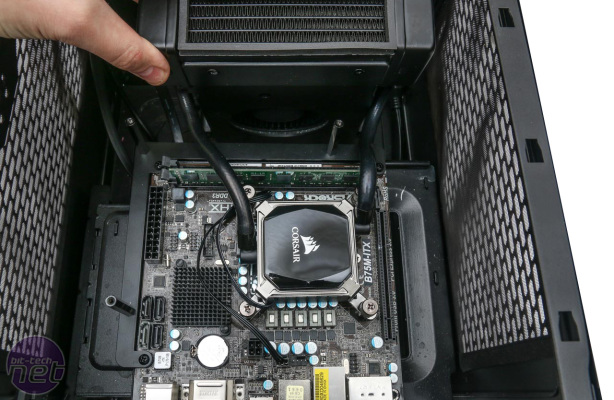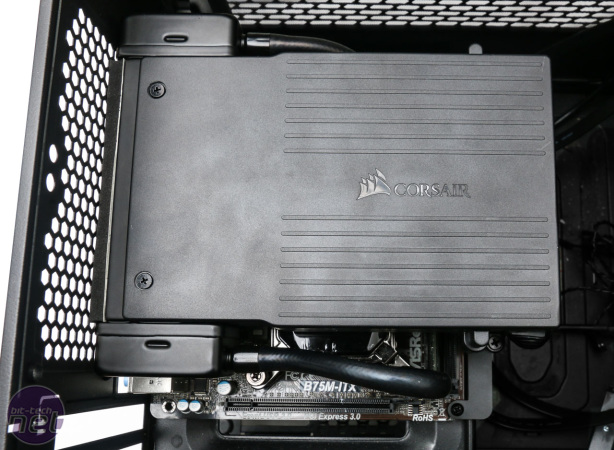
Performance Analysis
As the cooler is so specific, we've used different gear to normal as well as including a relatively low TDP limit air cooler too. As a result, we've also used a stock speed CPU so we can directly compare the results. This might not be indicative of performance in an overclocked system, but if you're considering a low profile cooler, chances are that overclocking won't be at the forefront of your mind anyway.Click to enlarge
It wasn't surprising to see the H5 SF bettered by a hefty margin by the H80i GT with the latter ramped up to maximum pump and fan speeds in both tests, with 9°C and 10°C different respectively on a test bench and in a case. However, the H5 SF does manage to shift a fair amount of air so it bettered our expectations here when pitched against one of the best-performing AIO liquid coolers on the market.
Click to enlarge
It also had a massive 19°C advantage over the Noctua NH-L9i, although it is admittedly a much cheaper, smaller and significantly more low-profile cooler. The H5 SF still managed to pip the H80i GT to the post by a few degrees when the latter was at its minimum speed, although the noise and airflow difference here was significant. The H80i GT was almost silent, while the H5 SF gets pretty intrusive, even at relatively low fan speeds; maximum speed is touching into hair dryer mode. Once mounted in a case, the results were actually fairly similar, although both liquid coolers had the advantage of being able to expel the warm exhaust air out the case, whereas the typical top-down cooling low profile cooler eventually saw the case warm up quite significantly as it dumped most of the heat back into the case.
Click to enlarge
Conclusion
The H5 SF, despite somewhat mixed results, is an interesting gadget. As we suspected at the start, that graphics card-style radial blower fan is pretty noisy, so it does seem at odds with the goal of many low profile coolers, which is to be quiet while offering modest cooling. The H5 SF flips that arround and offers excellent cooling, but with much higher noise levels, while stooping to a moderate cooler height way south of 90mm.The restricted compatibility, though, compounds the already fairly niche appeal, but there is a definite place for it, which is cases such as Corsair's Bulldog or other very low profile cases that have no room for standard AIO liquid coolers, but demand more cooling than your average low profile air cooler can deliver. If you're not overclocking, then as our results show, while the H5 SF easy tames our high-end quad-core Core i7, even modest air coolers can do the same, albeit to a much lesser degree.
Many low profile air coolers such as the Raijintek Pallas have coped with the same CPU, which has been overclocked to 4.4GHz too as you can see our review, albeit in a larger case. This leaves the H5 SF aiming at significantly overclocked mini-ITX systems or those with very restricted airflow; so long as you have an exhaust vent for the H5 SF cooler itself, it's fairly self-sufficient, whereas a low profile air cooler is very dependant on having, at the very least, a good exhaust fan.
Similarly, though, another fact that underlines the niche appeal is that if you have a nearby 120mm fan mount, then a standard AIO liquid cooler with 120mm radiator would nearly always be a better option and a quieter one too. All said and done, we love the fact that Corsair has taken a stab at this, though, even if the H5 SF wouldn't be our first choice for a low profile cooler.


MSI MPG Velox 100R Chassis Review
October 14 2021 | 15:04











Want to comment? Please log in.